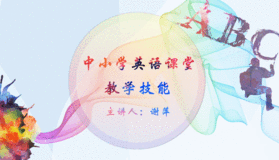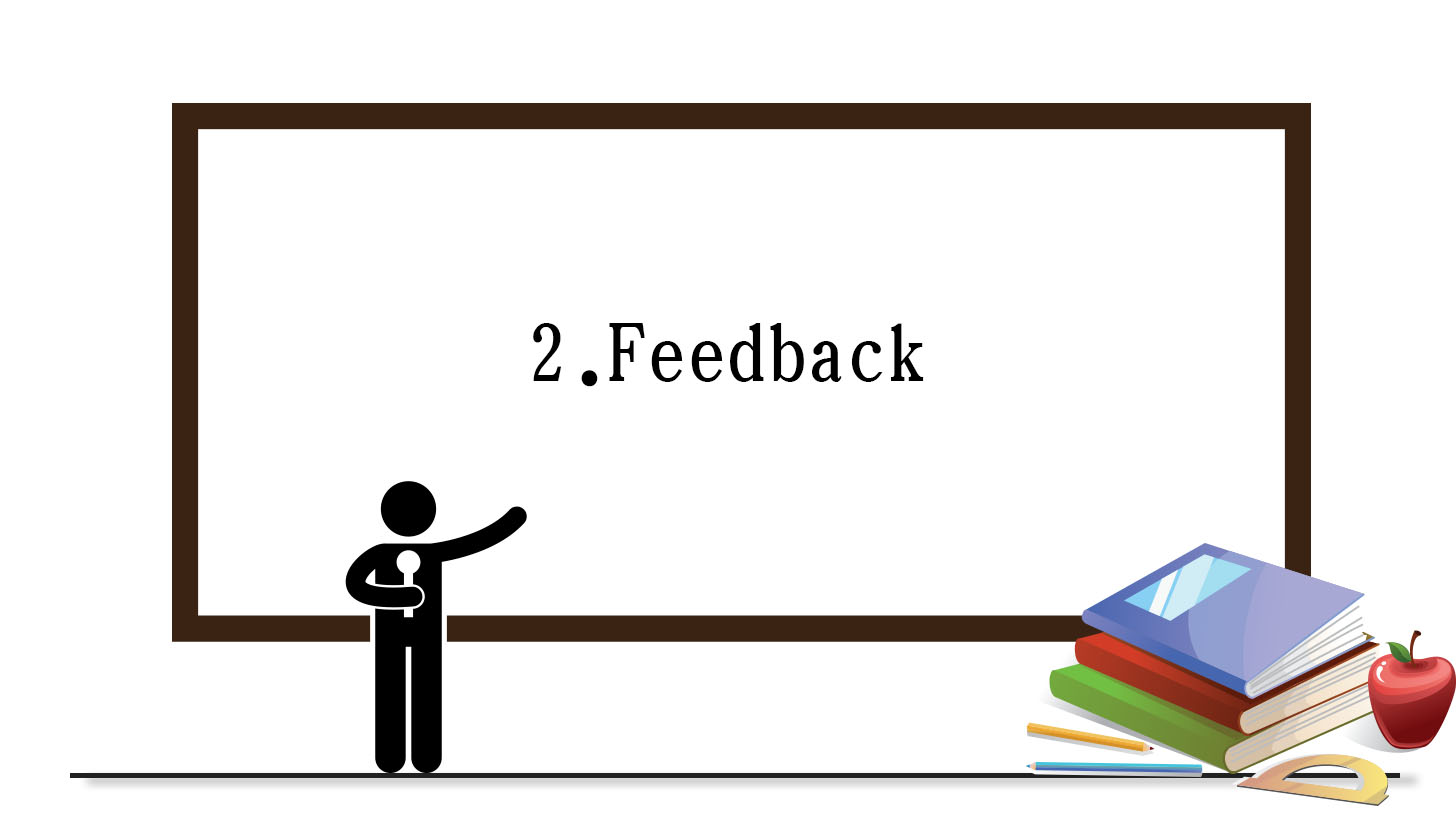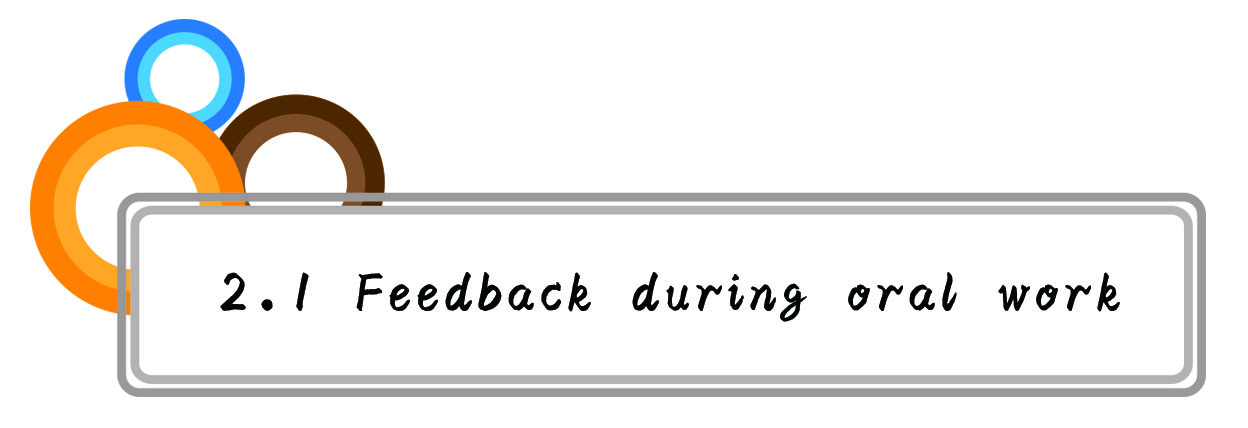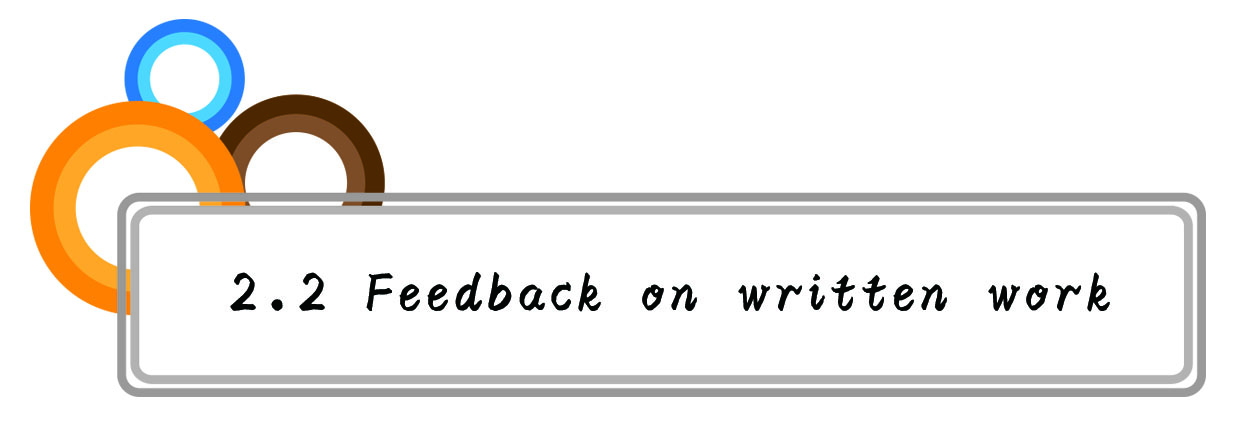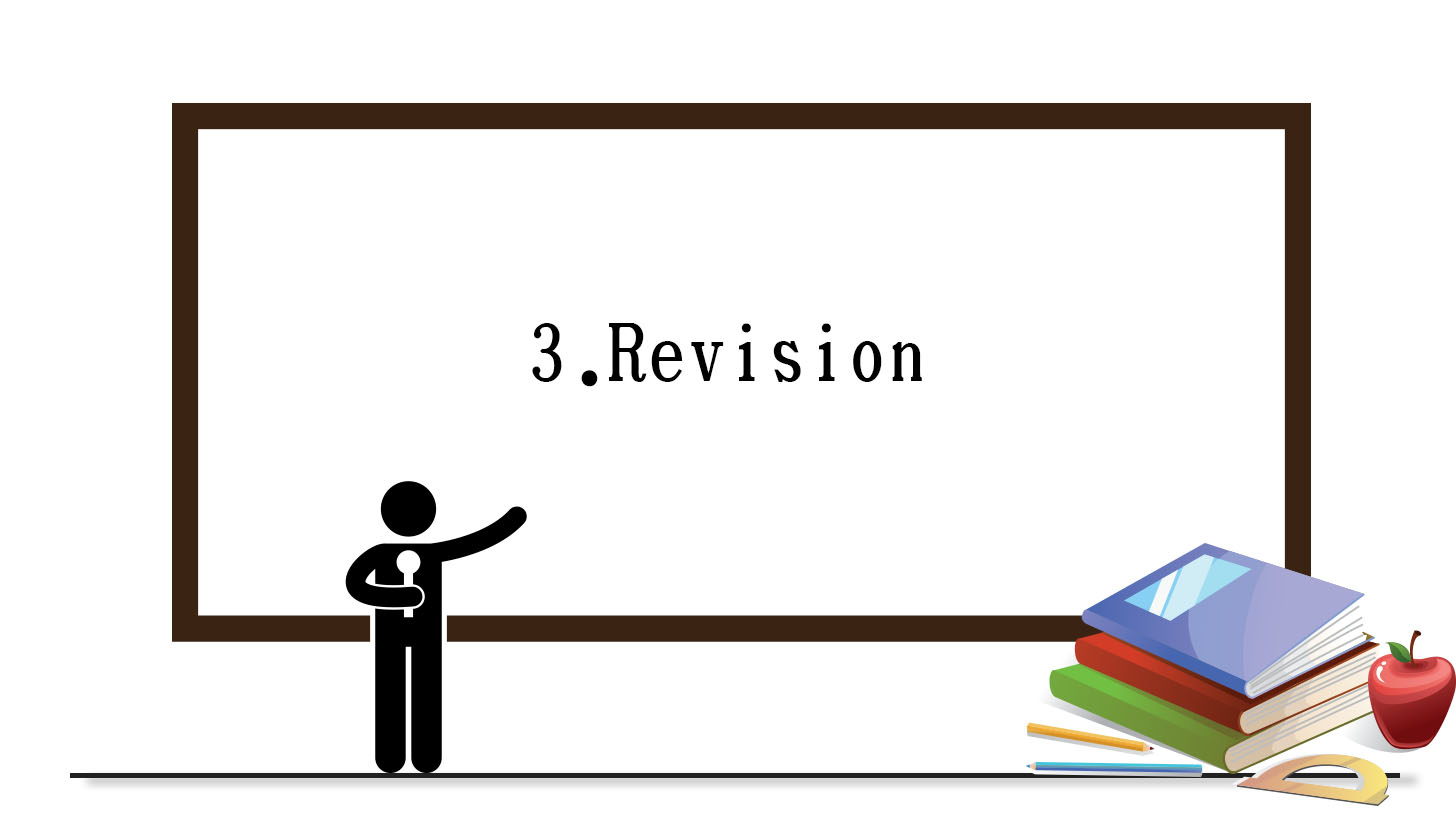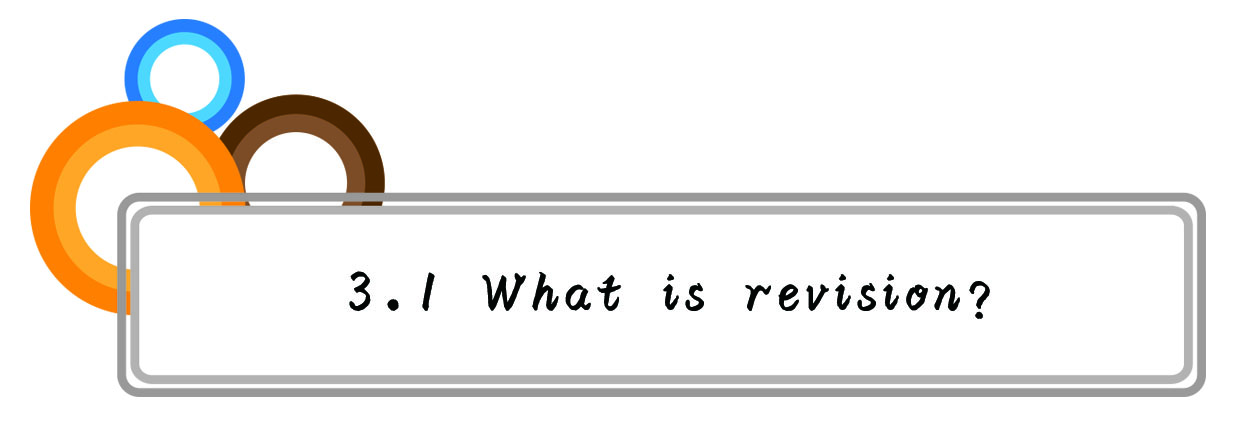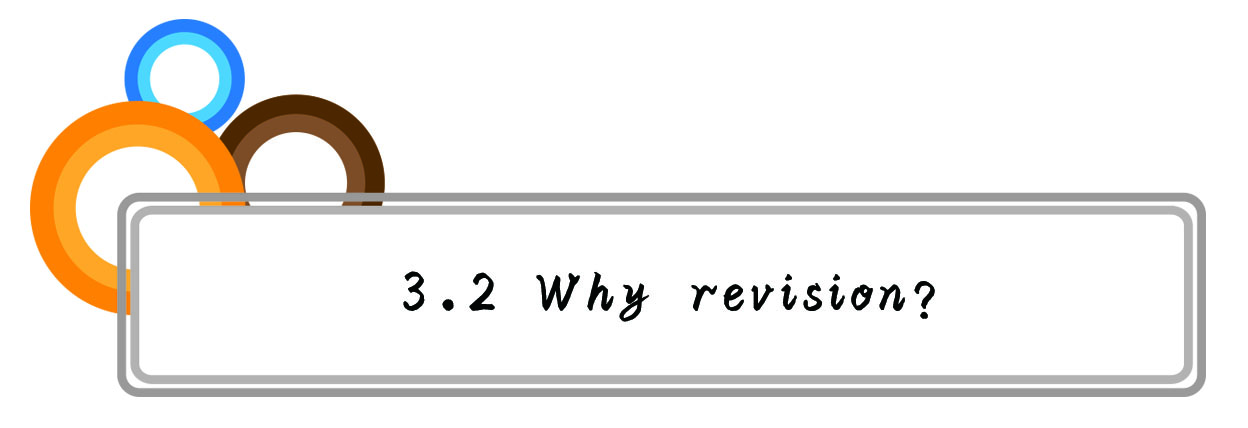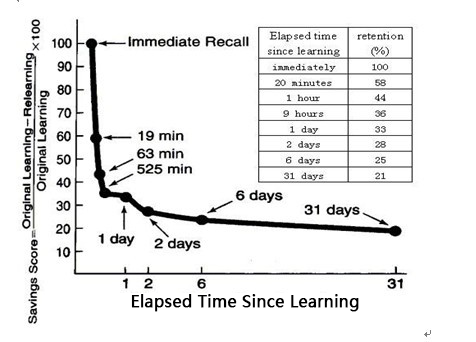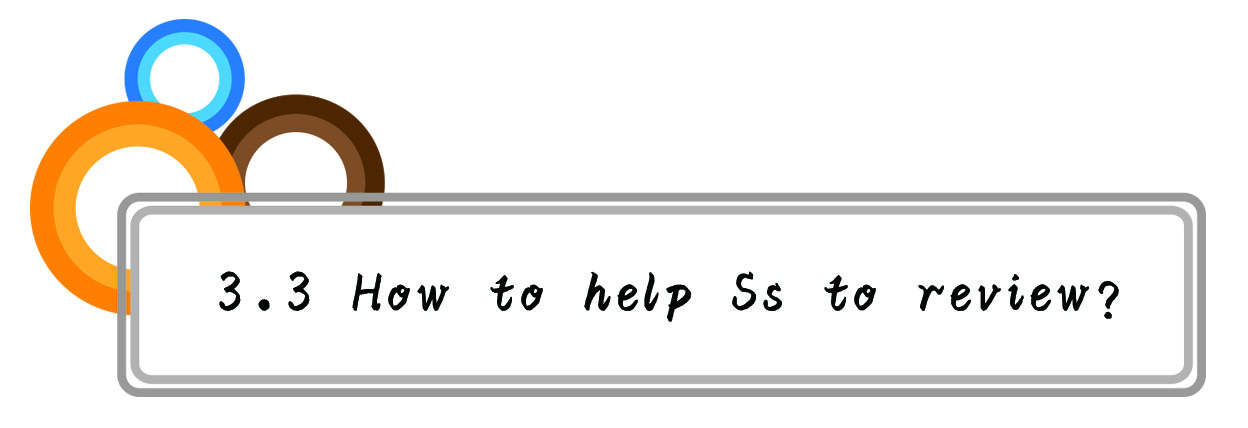-
1 Correction
-
2 Feedback
-
3 Revision
-
4 Resource
-
5 Questions
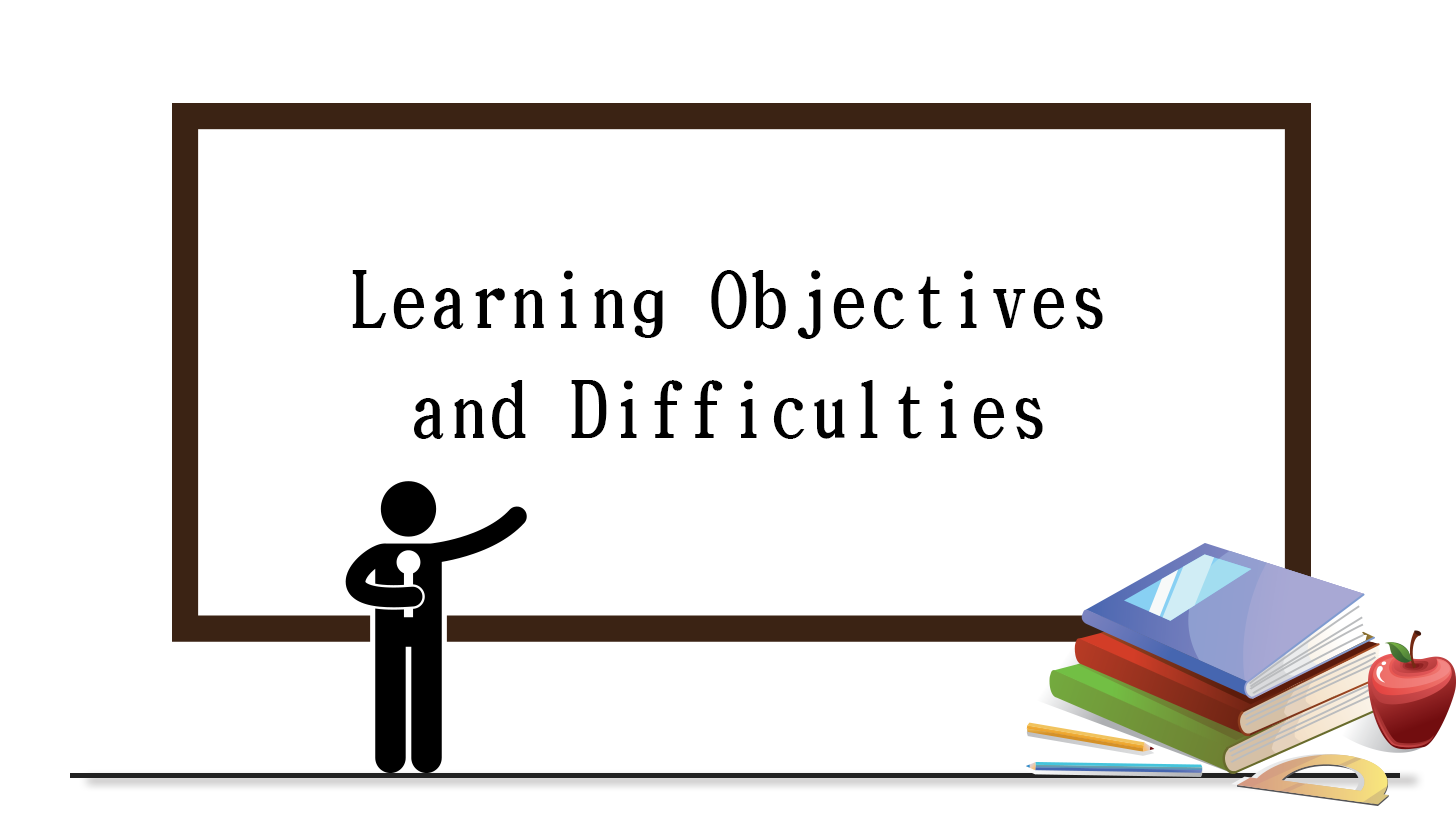
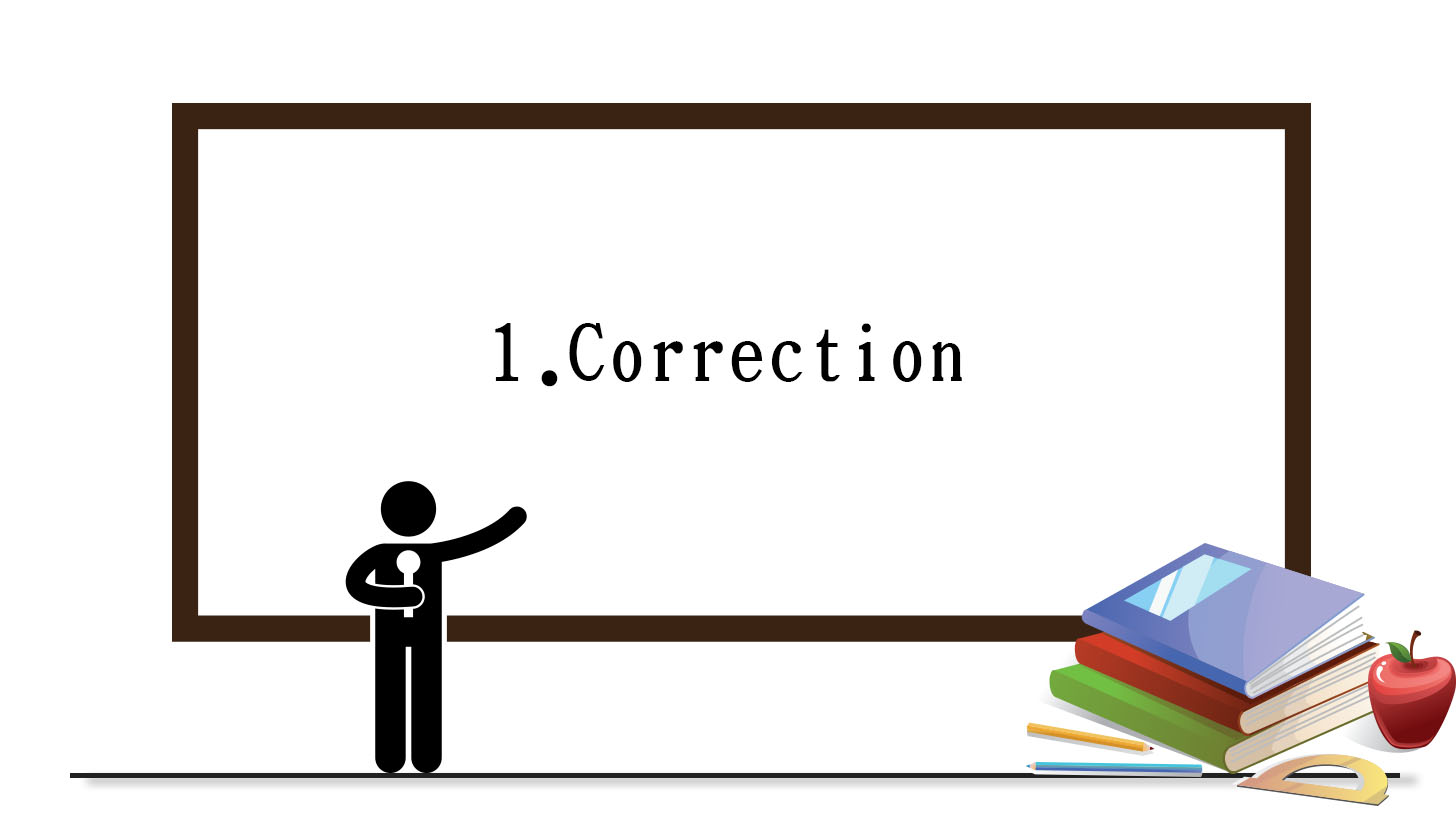
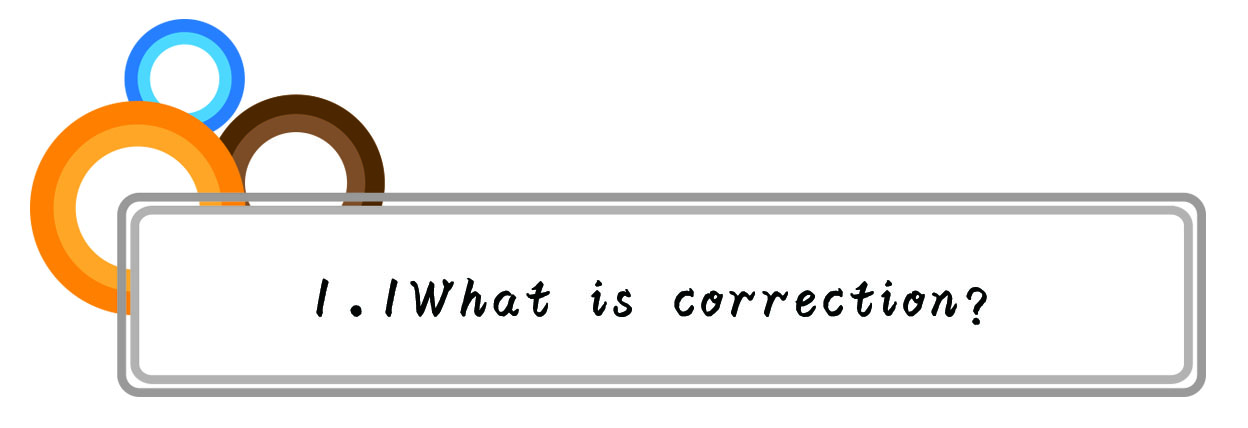
Correction: Marks or comments from teachers or peers made on a piece of work, which indicate where there are mistakes and what are the right answers.
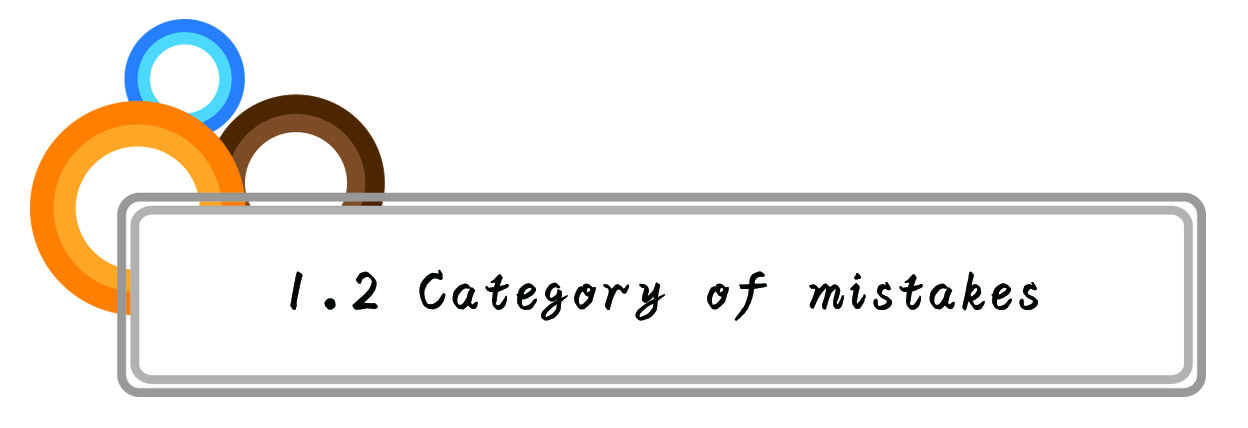
(1) Slips: mistakes which students can correct themselves once the mistake has been pointed out to them;
(2) Errors: mistakes which they cannot correct themselves—and which therefore need explanation;
(3) Attempts: that is when a student tries to say something but does not yet know the correct way of saying it.
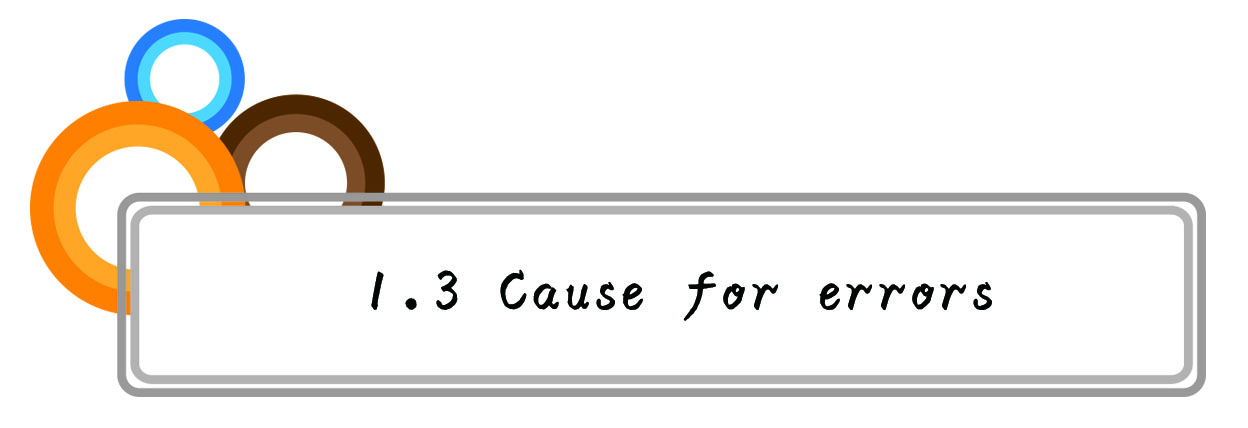
(1) L1 interference: students who learn English as a second language already have a deep knowledge of at least one other language, and where L1 and English come into contact with each other there are often confusions which provoke errors in a learner’s use of English. This can be at the level of sounds, grammar or word usage.
(2) Developmental errors: What seems to be happening is that the child starts to ‘over-generalize’ a new rule that has been (subconsciously) learnt, and as a result even makes mistakes with things that he or she knew before. (e.g. Daddy goed. They comed.) Later, however, it all gets sorted out. Errors of this kind are part of a natural acquisition process.
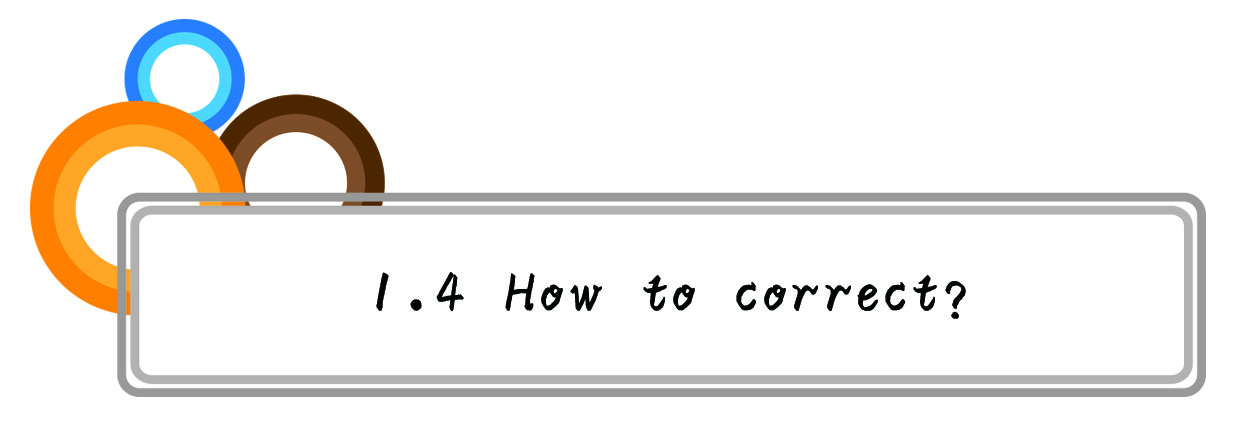

(1) The way we assess and correct students will depend not only upon the kind of mistakes being made, but also on the type of activity the students are taking part in.
(2) If a teacher wants to assess student performance to be effective, praise has to be combined, in the students’ eyes, with the teacher’s genuine interest in their work. Measured approval and disapproval which demonstrates a teacher’s interest in and attention to a student’s work may well result in continuing or even increased motivation.
(3) Decisions about how to react to performance will depend upon the stage of the lesson, the activity, the type of mistake made, and the particular student who is making that mistake.

(1) Comments: commenting on student performance happens at various stages both in and outside the class. We may say good, or nod approvingly, and these comments (or actions) are a clear sign of appositive assessment. When we wish to give a negative assessment we might do so by indicating that something has gone wrong, or by saying things such as That’s not quite right.
(2) Marks and grades: When students get good grades their motivation is often positively affected—provided that the level of challenge for the task was appropriate. Bad grads can be extremely disheartening. We need to decide on what basis we are going to do this and be able to describe this to the students.
(3) Reports: at the end of a term or year some teachers write reports on their students’ performance either for the student, the school, or the parents of that student. Such reports should give a clear indication of how well the student has done in the recent past and a reasonable assessment of their future prospects. It is important when writing reports to achieve a judicious balance between positive and negative feedback.
